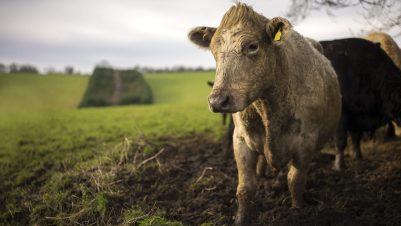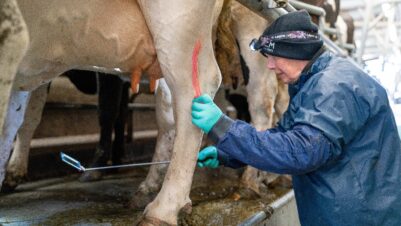Veterinarians and farmers are being urged to monitor stock carefully and report any clinical signs of disease immediately following the ongoing presence of Bluetongue Disease in France. The advice comes after the latest risk assessment from the Animal and Plant Health Agency (APHA) revealed that the UK is at risk of an outbreak during the spring or summer months, with an outbreak in late summer rated the most likely. This would be the result of infected midges being blown across from France to the south east of England.
Bluetongue can cause illnesses in domestic and wild ruminants such as sheep, cattle, goats, deer, llamas and alpacas. The risk of an incursion in the UK is highly dependent on the level of disease on the continent, the proximity to the UK of cases in the rest of Europe and the weather, including temperature and wind direction.
Restriction zones are already in place in France to control the spread of the disease, and if bluetongue were to be found circulating in the UK, similar measures such as movement restrictions would be put in place in line with the National Control Strategy.
Deputy Chief Vet Simon Hall said:
“We have robust disease surveillance procedures in place and are working closely with the livestock industry to carefully monitor the situation in France where bluetongue disease control measures are in place.
“The risk of incursion from infected midges is difficult to predict at this stage because it is highly dependent on the level of disease on the continent, the proximity to the UK and the weather.
“Animal keepers should remain vigilant for any signs of disease and report any suspicions to their vet and the Animal and Plant Health Agency immediately. Livestock keepers should also consider with their vet if vaccination is an option which would benefit their business.”
British Veterinary Association Senior Vice President Professor John Blackwell added:
“We strongly encourage all farmers to closely monitor their stock for bluetongue symptoms – particularly sheep that are most susceptible to the disease – including eye and nasal discharge, drooling, swelling around the head or mouth, lethargy and lameness.
“Vets are there to support farmers in protecting the health and welfare of their livestock. We’d recommend farmers speak to their local vet about the benefits of vaccination, given their locality and individual circumstances, and especially if farmers have any concerns about their livestock.”
Commenting on the UK’s world class surveillance and response capabilities, Professor Peter Mertens of The Pirbright Institute, the centre for bluetongue epidemiology research in Europe, said:
“Diagnostic tests used to detect the virus were developed at The Pirbright Institute so we are confident that these tests are fast and reliable. It would appear that the virus circulating now is almost identical to the virus outbreak in 2007 therefore we know exactly what to expect and are well prepared.”
Defra and APHA are working closely with the Devolved Administrations and the livestock industry, and more information on what would happen if Bluetongue Disease was confirmed is available in the Bluetongue Virus Control Strategy.
Vaccination is the only effective tool to protect susceptible animals from bluetongue. Vaccines are approved for use within the EU and allow keepers to protect their animals from Bluetongue, while also facilitating the movement of vaccinated animals out of any Restricted Zones that may be imposed.
Only in rare cases will some animals die or need to be culled for welfare purposes. In cattle there may be longterm production losses (e.g. reduced milk yield) in recovered animals. In sheep, production losses may also be prolonged and include infertility (especially in males) and reduced lambing percentages.
Veterinarians with clients involved in the import and movement of bluetongue susceptible species should also discuss this with their clients, and advise them to carefully consider the risks and the health status of animals when sourcing stock from abroad.
The UK had an outbreak of BTV in 2007 and disease freedom was regained in 2011. There were 130 outbreaks reported and its impact in the UK was considered limited compared to the experience of some farmers in the rest of Europe. Disease was eradicated due to a combination of movement controls, voluntary vaccination, surveillance, heightened awareness of risks, weather patterns, and the improving situation in mainland Europe.
The latest APHA risk assessment is available at: https:// www.gov.uk/government/collections/animal-diseases-international-monitoring.
There is more information on the signs of Bluetongue disease at: https://www.gov.uk/guidance/bluetongue.









